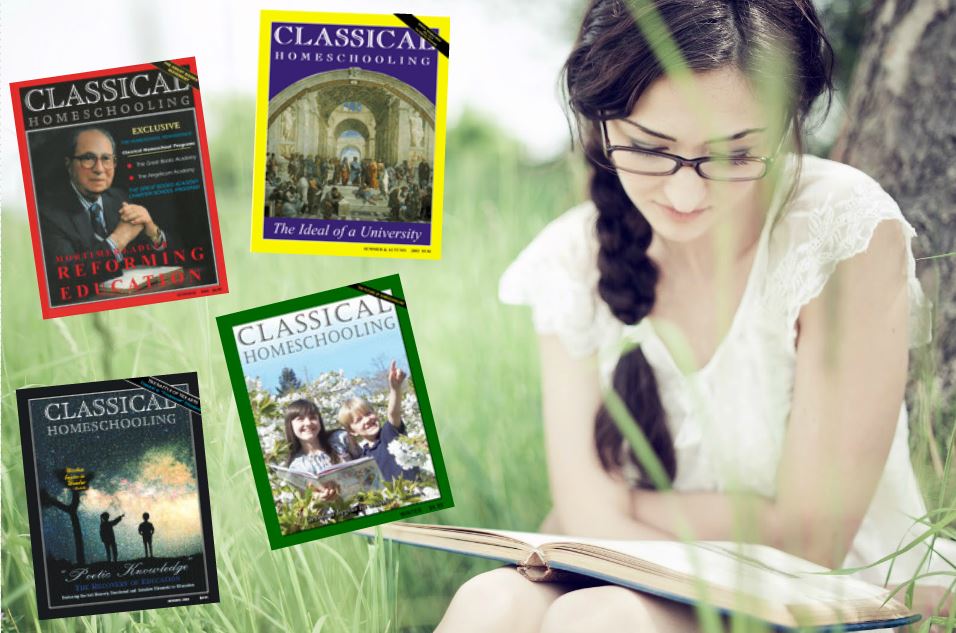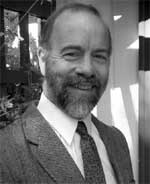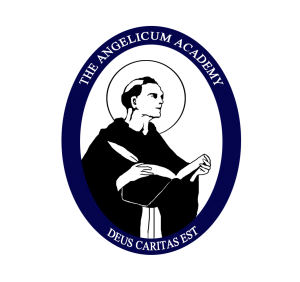
TO OUR READERS
Stephen F. Bertucci, Editor
 This SUMMER 2000 premier issue of CLASSICAL HOMESCHOOLING magazine chronicles the revival of the return-to-the-classics great books educational reform movement, but in an entirely new arena for it: the burgeoning homeschooling movement. One author herein has called it the Homeschool Renaissance. Like the Renaissance before, this one too inaugurates a rebirth of classical wisdom. This Renaissance is beginning in the homes of ordinary Americans, who are willing, and able, to make the sacrifices necessary to educate their children in the classical tradition of Western civilization.
This SUMMER 2000 premier issue of CLASSICAL HOMESCHOOLING magazine chronicles the revival of the return-to-the-classics great books educational reform movement, but in an entirely new arena for it: the burgeoning homeschooling movement. One author herein has called it the Homeschool Renaissance. Like the Renaissance before, this one too inaugurates a rebirth of classical wisdom. This Renaissance is beginning in the homes of ordinary Americans, who are willing, and able, to make the sacrifices necessary to educate their children in the classical tradition of Western civilization.
Perhaps never before has such an opportunity for genuine educational reform in the United States held such promise of success. Unlike the entrenched and organized opposition to meaningful reform in our failing public school system, no resistance to genuine improvement and reform exists in the homeschool movement. To the contrary, homeschooling parents are increasingly seeking out sources for classical materials and support for a return to the roots of what is left of Western culture.
In the lives of their children these parents are making a difference – the difference between Homer Simpson and Homer; Muzac and Mozart; sit-coms and Shakespeare; Mickey Mouse cartoons and Michelangelo; Ronald McDonald clowning and The Divine Comedy; between “neo-Stone Age men” and true gentlemen and young ladies. God bless such parents. The articles by Drs. Hancock and Redpath analyze homeschooling from a philosophical perspective.
The Great Books Movement began 79 years ago (1921) at Columbia University when Elizabethan literature Professor John Erskine introduced students to the classics under the title “Classics of Western Civilization” in his General Honors class. Erskine and his students read one classic a week over a two-year period and, even more importantly, discussed each one in a round-table open seminar format for two hours a week.
One of his students, Mortimer J. Adler, used the phrase “great books course” or the class. The phrase stuck and became the name for a whole educational reform movement, chronicled in the article “The Great Books Movement”.
From Columbia, the Great Books Movement was gradually spread across the land by Mark Van Doren, Scott Buchanan, Stringfellow Barr, Rexford Guy Tugwell, Whittaker Chambers, Jacques Barzun, Otto Bird, Clifton Fadiman, Charles Van Doren, Dennis Quinn, Franklyn Nelick, John Senior and many others. Two names especially arose to prominence in the movement: Robert M. Hutchins, then-President of the University of Chicago, and Mortimer J. Adler. With the passing of Hutchins in 1977, the name of Mortimer J. Adler became synonymous with the Great Books Movement.
We are therefore pleased to dedicate this first issue of CLASSICAL HOMESCHOOLING to these greats of the Great Books Movement, and in particular to Dr. Mortimer J. Adler. May he be with us for many years to come.
Articles on all of the above topics appear in this issue as well as fascinating articles on: the relationship of error, the Bible, and the Great Books Movement; the three modes of teaching advocated in Dr. Adler’s Paideia Proposal; using modern media in homeschooling; homeschooling and the law; and on the two great books homeschool programs.
Please write and let us know what you think of this first issue of Classical Homeschooling and offer any suggestions or changes you wish to see in future issues. The next issue will include: letters-to-the-editor; articles on other homeschool programs and products; advertising from homeschool suppliers and vendors; an in-depth look at our sinking public schools. We hope you enjoy and profit from this issue as much as we have.

